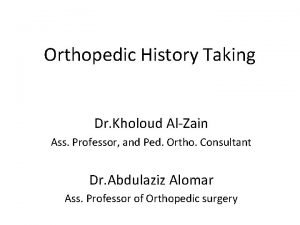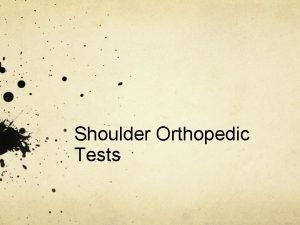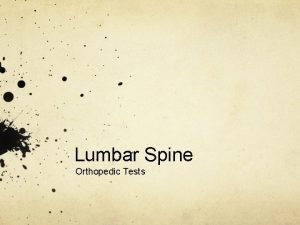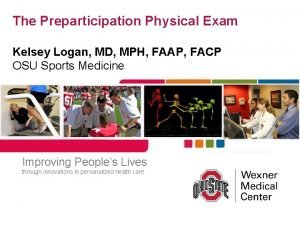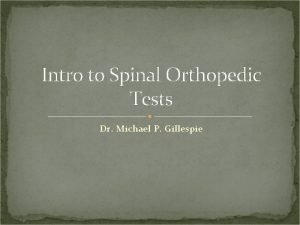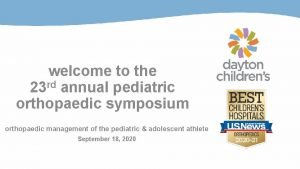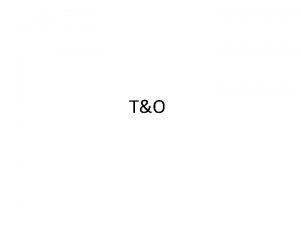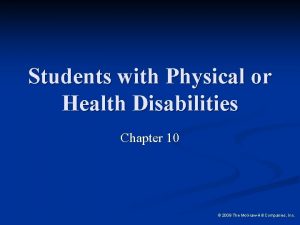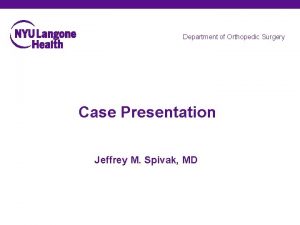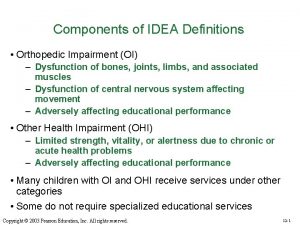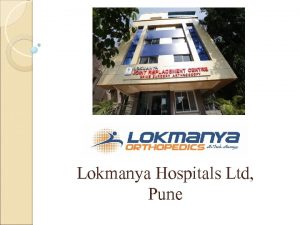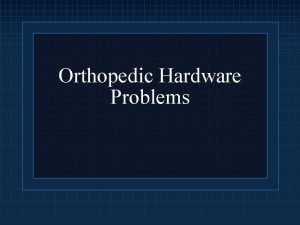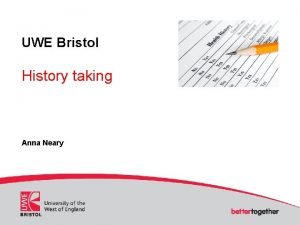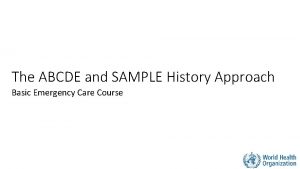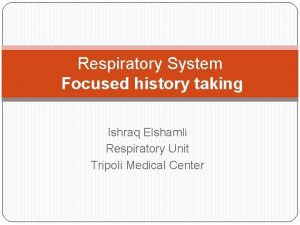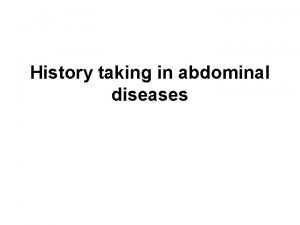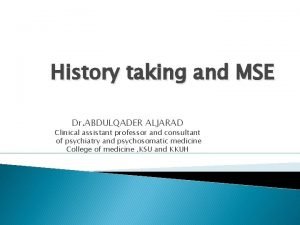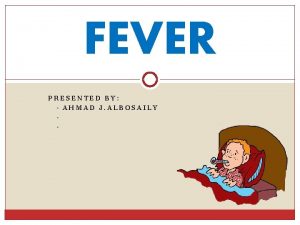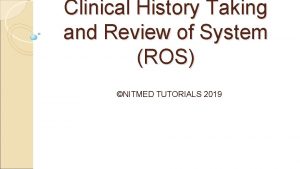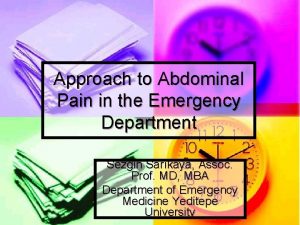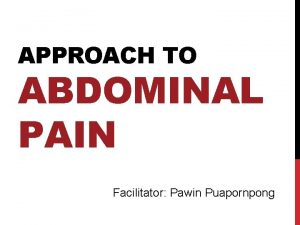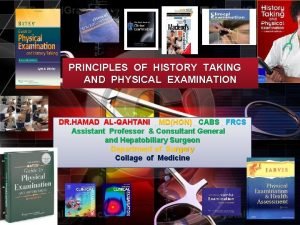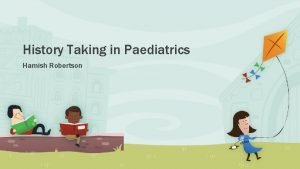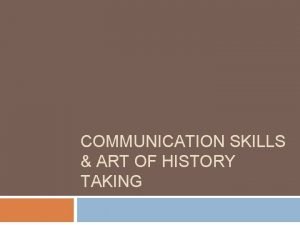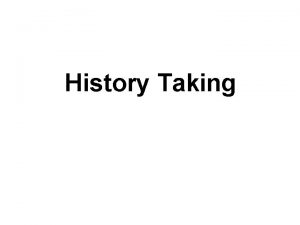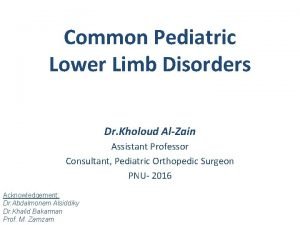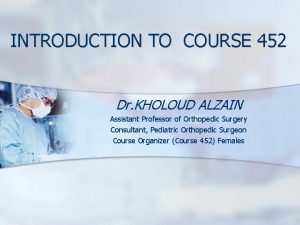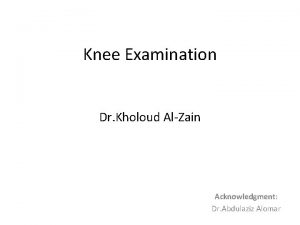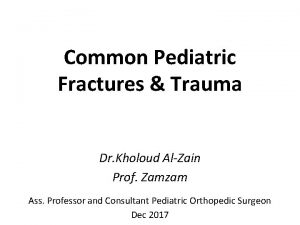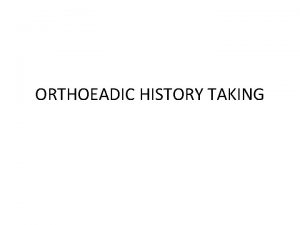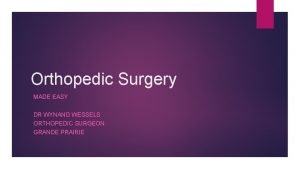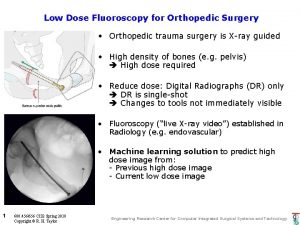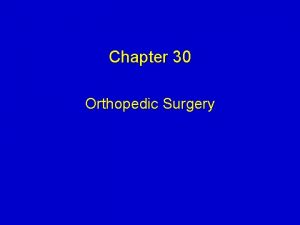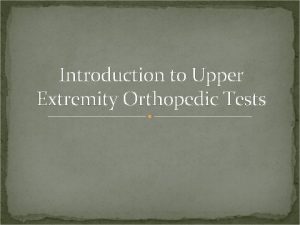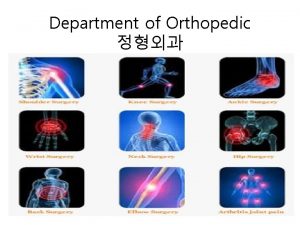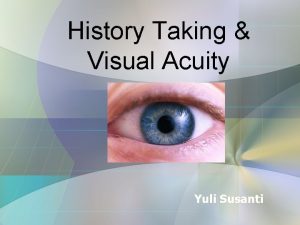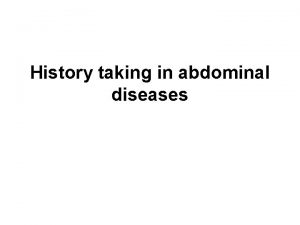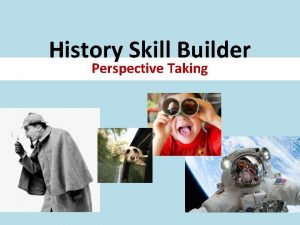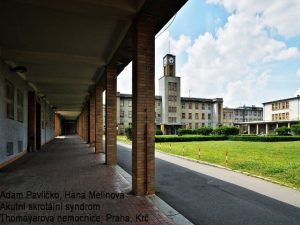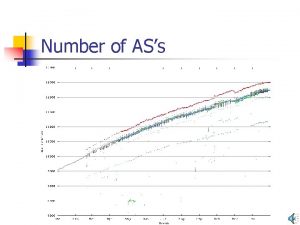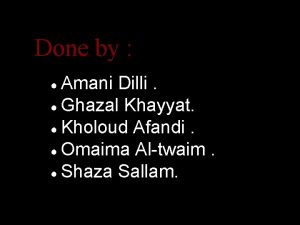Orthopedic History Taking Dr Kholoud AlZain Ass Professor






























- Slides: 30

Orthopedic History Taking Dr. Kholoud Al-Zain Ass. Professor, and Ped. Ortho. Consultant Dr. Abdulaziz Alomar Ass. Professor of Orthopedic surgery

Orthopedic History Taking • • • Importance Structure Orthopedic C/O… History of treatment Special H/O: § § Pediatric Spine Shoulder Knee

History taking skills • History taking is the most important step in making a diagnosis. • A clinician is: § 60% closer to a diagnosis with a thorough history. § 40% by (examination & investigations). • History taking can either: § Traumatic, § Non-traumatic injury.

Objective By end of this session, you should be able & know how to take a MSK relevant history of the major musculoskeletal conditions

Structure Of History • Demographic features • Chief complaint • History of presenting illness • Functional level • MSK systemic review • Systemic enquiry • PMH • PSH • • • Drug Hx Smoking Occupational Hx Allergy Family Hx Social Hx

MSK systemic review 1. 2. 3. 4. 5. 6. 7. 8. 9. Pain Stiffness. Swelling Instability Deformity Limp Loss of function Altered Sensation. Weakness.

1) Pain • Location § Point with a finger to where it is • Radiation § Does the pain go anywhere else • Type • How long have you had the pain • How did it start § Injury: o Mechanism of injury o How was it treated ? § Insidious

1) Pain • Progression § Is it better, worse or the same • When § § Mechanical / Walking Rest Night Constant • Aggravating & Relieving Factors § § § Stairs Start up, mechanical Pain with twisting & turning Up & down hills Kneeling Squatting

2) Swelling • • • Onset Duration Painful or not Local vs. generalized Constant vs. comes and goes Size progression: same or ↑ Rapidly or slowly Aggravated & relived factors Associated with injury or reactive From: soft tissue, joint, or bone

3) Instability • • • Onset How dose it start? Any Hx of trauma? Frequency Trigger/aggravated factors Giving way Locking I can not trust my leg! Associated symptoms § Swelling § Pain

Mechanical symptoms Locking / clicking • Due: § Loose body, § Meniscal tear • Locking vs. pseudolocking Giving way • Due: § ACL § Patella

4) Deformity • • • When did you notice it? Progressive or not? Associated with symptoms pain, stiffness, … Impaired function or not? Past Hx of trauma or surgery PMHx (neuromuscular, polio)

5) Limping • • Onset (acute or chronic) Traumatic or non-traumatic ? Painful vs. painless Progressive or not ? Use walking aid ? Functional disability ? Associated swelling, deformity, or fever.

6) Loss of function • How has this affected the patient’s life • Home (daily living activities DLA) § § § § Prayer Squat or kneel for gardening Using toilet Getting out of chairs / bed Socks Stairs Walking distance Go in & out of car • Work • Sport § Type & intensity § Run, jump

Keep In Mind

Red flags • • • Weight loss Fever Loss of sensation Loss of motor function Sudden difficulties with urination or defecation

Risk factors Age (the extremes) Gender Obesity Lack of physical activity Inadequate dietary calcium and vitamin D • Smoking • • • Occupation and Sport Family History (as: SCA) Infections Medication (as: steroid) Alcohol PHx MSK injury/condition PHx Cancer

Current and Previous History of Treatment • Non-operative: § Medications: o Analgesia o Antibiotic o Patient's own § Physiotherapy § Orthotics: o Walking aid o Splints • Operative: § What, where, and when ? § Peri-operative complications

Special MSK

Pediatric • • Product of F. T or premature Pregnancy normal or not Delivery SVD (cephalic vs. breach), C/S (elective vs. E. R) Family parents relatives, patient sequence, F/H of same D. Any NICU, jaundice, blood transfusion Vaccination Milestones neck, flip, sit, stand, walk Who noticed the C/O

Spine • • • Pain radiation as L 4, exact dermatome or myotome Coughing, straining Sphincter control (urine & stool) Shopping trolleys (forward flexion) Neuropathic: § Increase back extension & walking downhill § Improves walking uphill & sitting • Vascular: § Increase walking uphill (generates more work) § Improves stop walking (stand) is better than sitting due to pressure gradient

Spine • Cervical myelopathy: § Hand assessment § Coughing, straining • Red Flags § Constitutional symptoms fevers, sweat, weight loss § Pain night or rest § Immunosuppression

Shoulder • Age of the patient § Younger patients more: o shoulder instability, o acromioclavicular joint injuries § Older patients more: o rotator cuff injuries, o degenerative joint problems • Mechanism of injury § Abduction & external rotation dislocation of the shoulder § Chronic pain upon overhead activity or at night time rotator cuff problem.

Shoulder • Pain where: § Rotator Cuff anterolateral & superior § Bicipital tendonitis referred to elbow • Stiffness, Instability, Clicking, Catching, Grinding: § Initial trauma § What position § How often • Weakness if large tear in the R. C, not as neuro

Shoulder • Loss of function: § Home: o Dressing coat, bra o Grooming toilet, brushing hair o Lift objects o Arm above shoulder top shelves, hanging § Work § Sport • Referred pain mediastinal disorders, cardiac ischaemia

Knee • Injury as: ACL § § Mechanism position of leg at time of injury Direct / indirect Audible POP Did it swell up: v. Immediately (haemathrosis) v. Delayed (traumatic synovitis) § What first aid was done / treated § Could continue football match or had to leave

Knee • Insidious as O. A § § § § Walking distance Walking aid How pray regular or chair Cross legs on ground Squat (traditional toilet) Swelling on & off Old injury intra-articular

Remember

Now You are able & know how to take a relevant history of the major MSK conditions

Orthopedic History Taking • • • Importance Structure Orthopedic C/O… History of treatment Special H/O: § § Pediatric Spine Shoulder Knee
 Orthopedic history taking
Orthopedic history taking Promotion from assistant to associate professor
Promotion from assistant to associate professor Dugas orthopedic test
Dugas orthopedic test Bechterew test positive
Bechterew test positive Uva orthopaedics
Uva orthopaedics Concussion
Concussion Orthopedic search engine optimization
Orthopedic search engine optimization Bakody test
Bakody test Dr claire beimesch
Dr claire beimesch Orthopedic icats
Orthopedic icats Causes of orthopedic impairment
Causes of orthopedic impairment Orthopedic case presentation
Orthopedic case presentation Orthopedic case presentation
Orthopedic case presentation Idea orthopedic impairment
Idea orthopedic impairment Lokmanya tilak hospital chinchwad
Lokmanya tilak hospital chinchwad Spica cast
Spica cast Dr todd wilcox
Dr todd wilcox Pain history taking
Pain history taking Sample history
Sample history History taking respiratory system
History taking respiratory system Pc hpc pmh
Pc hpc pmh Ascites mnemonic
Ascites mnemonic Danza
Danza Crap riop
Crap riop Fatulance
Fatulance Lodcraft history taking
Lodcraft history taking Colonnoscopy
Colonnoscopy Principles of history taking
Principles of history taking History taking paediatrics
History taking paediatrics The art of history taking
The art of history taking What are the components of history taking
What are the components of history taking
